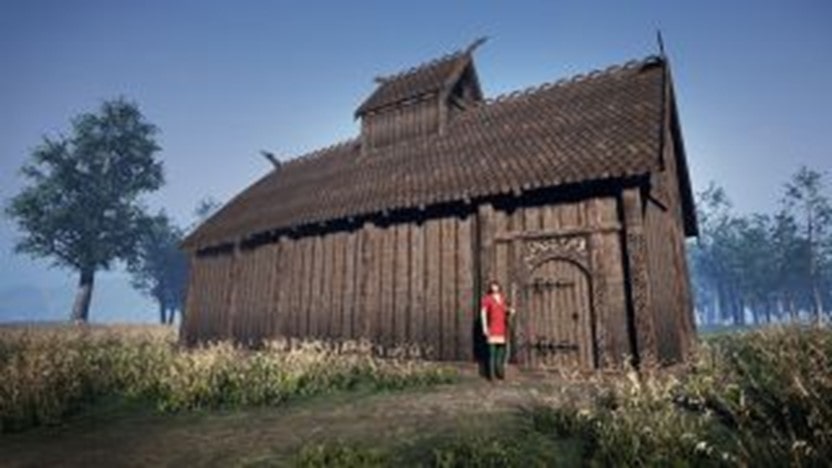1,200-year-old temple to Thor and Odin unearthed in Norway

October 2020 - The remains of a 1,200-year-old temple to the Old Norse gods Thor and Odin have been discovered in Norway. The site is found at Ose, a seaside village near the town of Ørsta in western Norway, beside the coast among mountains and inlets, about 150 miles south-west of the city of Trondheim, where Sri Aurobindo imagined Sweign’s kingdom in his Play Eric.
Archaeologists say the large wooden building — about 45 feet long, 26 feet wide, and up to 40 feet high — is thought to date from the end of the eighth century and was used for worship and sacrifices to gods during the midsummer and midwinter solstices. Boathouses would have been built along the shore in ancient times.
This is the first Old Norse temple found in the country, said archaeologist Søren Diinhoff of the University Museum of Bergen: "This is the first time we have found one of these very special, very beautiful buildings. We know them from Sweden and we know them from Denmark. This shows that they also existed in Norway."
The Norse began building these large "god houses," as they are called, in the sixth century. The god houses were much more complex than the simple sites, often outdoors, that the people previously used to worship the Old Norse gods.
Excavations at the site revealed the remains of two longhouses – probably family farms – from more than 2000 years ago, before the god house was built at the end of the eighth century A.D.
The interior of the god house at Ose may have been lit by hearths for sacrificial fires and had wooden statues of the god of wisdom Odin and the god of force Thor.
The purpose of the site is also revealed by a concentration of cooking pits where food for religious feasts was prepared, and numerous bones — the remains of animal sacrifices.
A large white "phallus" stone, roughly representing the male genital organ, was also found nearby several years ago and was probably part of the Old Norse fertility rituals.
Ceremonies would have been held in the god house for important festivals on the religious calendar, such as the midsummer and midwinter solstices — the shortest and longest nights of the year, respectively.
Meat, drink and sometimes precious metals like gold would have been offered to wooden figurines within the building that represented the Old Norse gods — in particular the god Odin, the god Thor, and the goddess Freya, who were commonly worshipped in the Old Norse religion.
 English
English  Italiano
Italiano